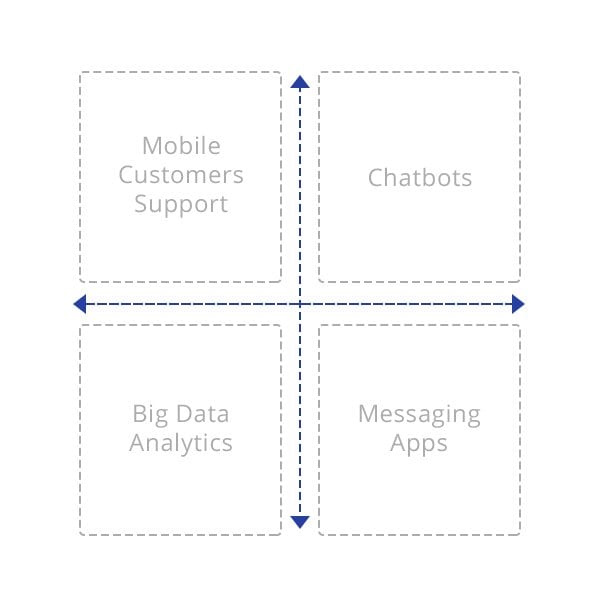
There’s no denying the fact that customer service is critical to any business. As customers have more alternatives than ever, the businesses that win the battle of customer service gain a clear competitive advantage. That’s why it’s so important to understand how new technologies can help your company keep that competitive edge in order to best serve your customers and ultimately improve the efficiency of your business, Here are four of the hottest technology trends ready to significantly improve customer service and beyond:


Mobile Customers Support
According to a BI Intelligence report, mobile commerce will make up 45% of total e-commerce, equaling $284 billion in sales by 2020. Therefore, brands will continue to emphasize responsive online storefronts designed for mobile devices in order to ensure a seamless experience, especially if they want to cater to the growing, mobile-centric Millennial demographic. However, as more and more transactions are performed through mobile, it’s only natural for consumers to expect mobile customer service as well. In fact, a report on mobile CX found 63% of consumers use mobile devices a few times a month or more to search online for customer and product support. These consumers expect to connect anytime, anywhere, and providing a text messaging solution allows brands to stay in touch throughout the entire customer journey, from shopping to buying and beyond. Look for more brands to integrate this solution into their customer service arsenal in the upcoming year.
Chatbots
Today, AI is one of the fastest growing technologies within IT operations. One of the main catalysts of this surging market is the use of chatbots in customer service. Many companies around the globe are beginning to replace customer service representatives with virtual assistants who can provide fast, cost-effective and human-like customer service. The vast amount of customer data that is collected by companies is used essentially as a data warehousing for an AI system. This data can be translated into deep machine learning that creates progressively higher and higher levels of intelligence and providing them with the ability to ‘learn’ the correct answer to any question over time. As customers today expect to receive instant service across all channels at all times, intelligent virtual personal assistant can be easily deployed on almost any interface, including voice response, mobile apps, SMS, the web, and instant messaging. To keep up with the growth of these channels, look for companies can leverage the power of chatbots to meet the rising volume of support requests with quicker response times.
Big Data Analytics
Today, the trend toward big data analytics is changing how businesses communicate with customers. Utilizing complex data sets from various sources, companies are gaining important insights into customer behavior and preferences and then using such feedback to provide a more personalized customer service, which drives sales and lasting customer loyalty. Furthermore, by leveraging big data analytics, brands can identify customer pain and passion points more effectively, while even anticipating what customers will ask for in advance to quickly resolve each customer interaction. According to Salesforce, 57% of consumers today are willing to share personal data with companies that send personalized offers and discounts. With such access becoming ever easier, look more and more brands to finally make the push to leverage customer data from their CRMs to create more tailored experiences.
Messaging Apps
It’s no secret that the key to successful customer support is communication. By leveraging the key insights available through big data combined with artificial intelligence, brands have an opportunity to collect feedback and more effectively communicate with customers in real-time. For that reason, messaging apps, which have quickly become the dominant form of communication for consumers, are also set to become a critical CX channel for companies. Today 2.5 billion people around the world use messaging apps, including WhatsApp, Facebook Messenger and We Chat and that number is expected to exceed 3.6 billion by 2018. Facebook led the charge in 2016 when it announced it was turning its instant messaging and software application service, Messenger, into a platform that allows businesses to use it as a customer service tool to chat with consumers, and now other innovative companies are also exploring using such platforms for customer support. With the functionality of “always on” customer support, chat apps have a much higher usage and retention rate than most mobile apps, so look for messaging apps being offered by brands to only increase.
Each of these customer service trends seek to create a positive, customer-centric experience that gives consumers more of what they want, while businesses will also benefit from a deeper understanding of their customers, businesses will be able to give relevant customer service to the customers based on their needs and expectations, together with new ways to utilize this knowledge and driving better business results. Sound like a win-win.
[About the author]


